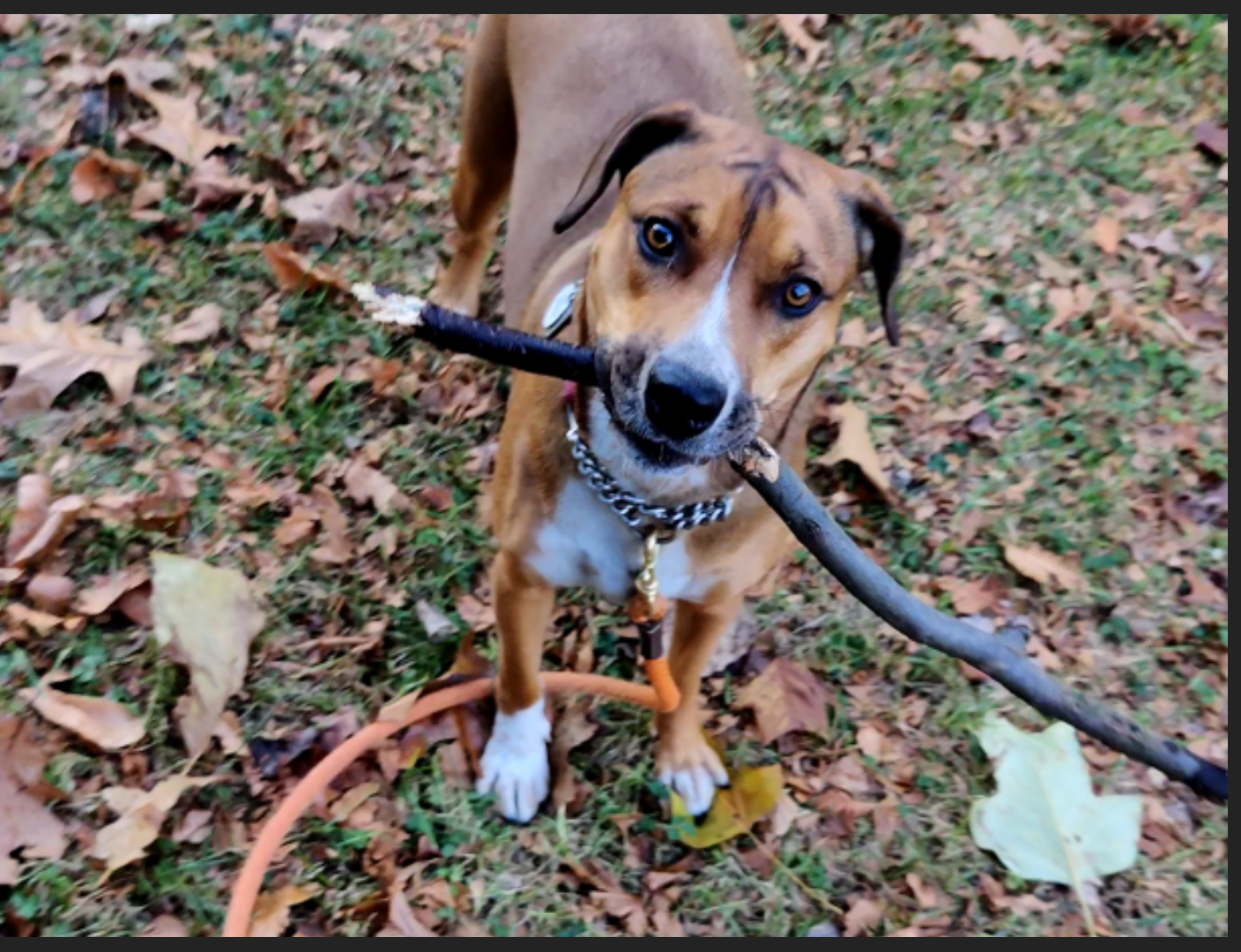She’s clearly having fun, running around in circles, chewing sticks, and finding and eating cat poop. And I don’t want to discourage her from having fun when I take her outside (except for the cat poop thing – that needs to stop).
But she seems to have the idea that jumping up and biting my wrists or my ankles is a fun game that we both enjoy, and she seems to be getting more agressive about it.



I’ve always trained dogs not to bite by firmly saying “Ow! No bite.” They have to learn that we are more delicate than other dogs. It’s also very important to provide them with an alternative.
So I make a noise like it hurt, say no bite, and then give them a toy immediately after. This promotes what I call ‘substitute biting,’ where I’ll rile one of my dogs up with a little rough housing, and they’ll grab a toy and start chomping down and shaking that while looking at me.
I fostered a stray who I basically had to train all the puppy phases out of when he was about 1 year old and as big as my wife (GSD mix/mut). Even tho he was starved of human contact, he too learned not to bite with this method. Took longer than most puppies… but when I’d say “Ow! No bite.” he’d stop and look at me trying to figure out what prompted it. If toy substitution didn’t work, I’d stop playing. He learned that if he wanted to play, he couldn’t bite the fragile humans.
Also worth noting that some dogs (common with GSD for instance) like to engage in a sort of handholding, especially as a puppy. It may seem like they’re wanting to chew on you if you don’t know better, but if they kinda just get your hand in their mouth it could be the ‘handholding.’ I break that habit because it can still scratch and I don’t want someone to claim a dog of mine ‘bit’ them by doing it.
Had to google what GSD meant because all I could hear was great southern Dane, waauw wuuuw
German shepherd (dog)?
Yes, German Shepherd Dog.
Yep. I honestly used to think the abbreviation is kinda cringeworthy, but it’s outweighed by my laziness…